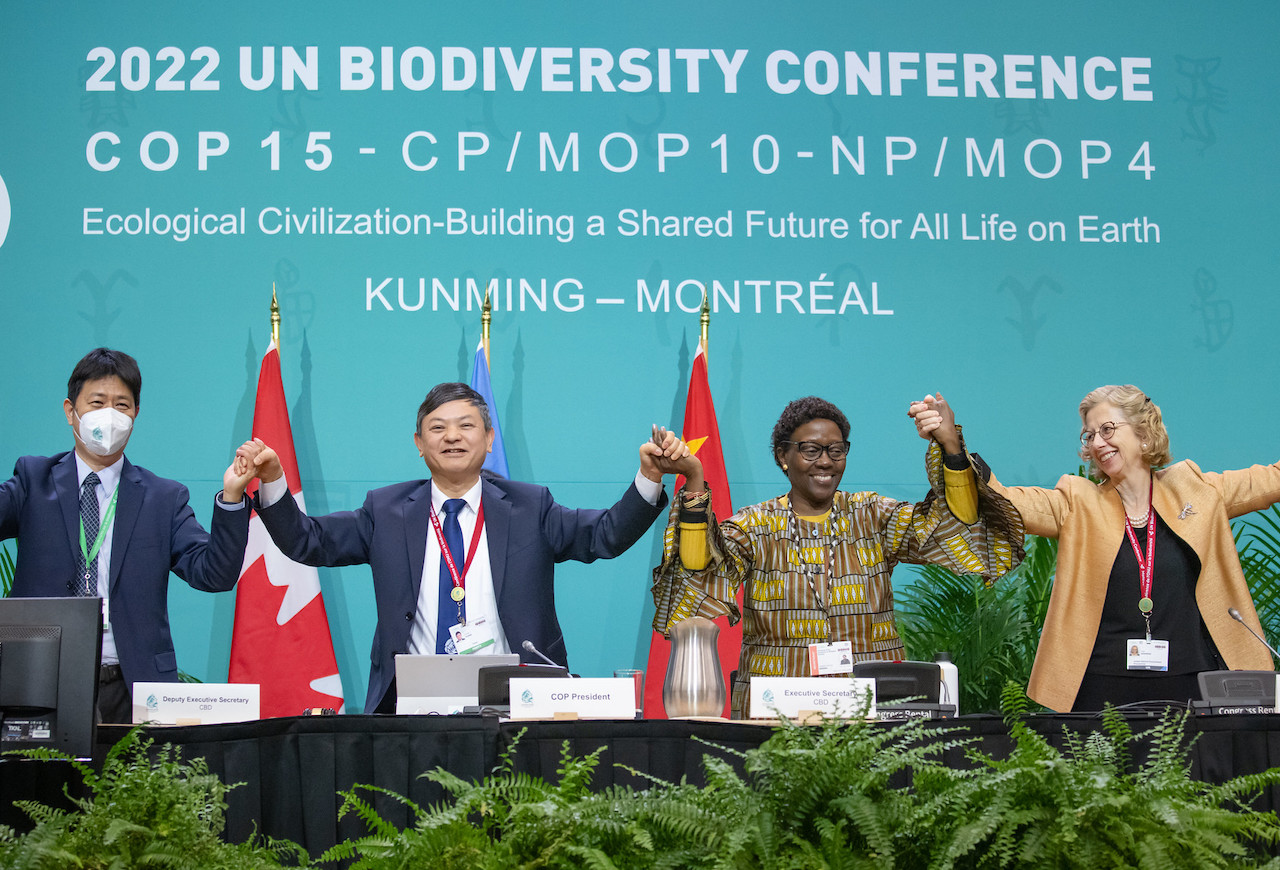The UN biodiversity summit in Montreal closed on a high note. Almost all countries in the world have reached an agreement to protect biodiversity, with 30% of the planet’s surface to be classified as protected natural area

In brief
- Almost all countries in the world reached an agreement on protecting biodiversity on Monday (19 January).
- At least 30% of the world must be classified as a protected natural area.
- $200 billion a year must also go to nature conservation.
Almost all countries in the world on Monday gave their support to a comprehensive plan to better protect nature. By designating 30% of the planet as a protected natural area and with hundreds of billions of dollars in support for nature conservation, the loss of biodiversity must come to a halt by 2030.
That is the result of a United Nations biodiversity summit in Canada. The accord has been in the works for four years, with China and Canada as the main drivers.
Loss of species
Since 1970, the number of animals in the world has fallen by almost 70%, and large numbers of animals and plants are threatened with extinction. Due to this loss of species, caused by factors such as agriculture and environmental pollution, entire ecosystems are in danger of disappearing. This not only has consequences for nature, but also for the climate and the economy.
For example, biodiversity loss means nature can absorb less of the greenhouse gas emissions, which accelerates climate change. Limited biodiversity also threatens to affect the yields of agriculture, fisheries and forestry.
Damage to economy
Last year, the World Bank calculated that without intervention 46 million hectares of nature will be lost by 2030, with an economic loss of $225bn per year. The damage would mainly affect poor countries.
To prevent this, the signatories pledge to designate 30% of the global land and water surface as protected areas by 2030. That is more than double compared to now. The measure should prevent the destruction of rainforests and coral reefs, among other things.
Money for nature conservation
Agreements have also been made to phase out subsidies for harmful activities and extra money will be made available for nature conservation: $200bn per year by 2030. Poor countries receive support from rich countries: $25bn per year from 2025, rising to $30bn per year in 2030.
It is also the intention that multinationals and financial institutions make public to what extent they themselves depend on or influence biodiversity.
Inger Andersen, head of UN environmental organisation UNEP, spoke on Monday of an agreement with ambitious goals. “For far too long humanity has paved over, fragmented, over-extracted and destroyed the natural world on which we all depend. Now is our chance to shore up and strengthen the web of life, so it can carry the full weight of generations to come.”
No DRC support
A setback for the agreement is that the Democratic Republic of Congo (DRC) does not seem to support it. The African country plays an important role in the conservation of biodiversity, because DRC is the country with the second largest area of rainforest in the world, after Brazil. The Congolese delegation believes that rich countries contribute too little to nature conservation in poor countries.
The United States did not participate at all and was merely an observer at the conference, after the Senate refused to sign previous accords of the UN convention on biodiversity. The Biden administration is in favour of the 30% protected nature measure.
DSI
The countries reached an agreement on who benefits from information from genetic sources, or digital sequence information (DSI). For example, the genes of animal and plant species can be a source for new medicines or foods.
African countries in particular have been arguing for some time that the country of origin of the genetic information should be paid for this. It has now been agreed to develop a payment mechanism for DSI.
This article was originally published in Dutch business newspaper FD on 19 December 2022.






